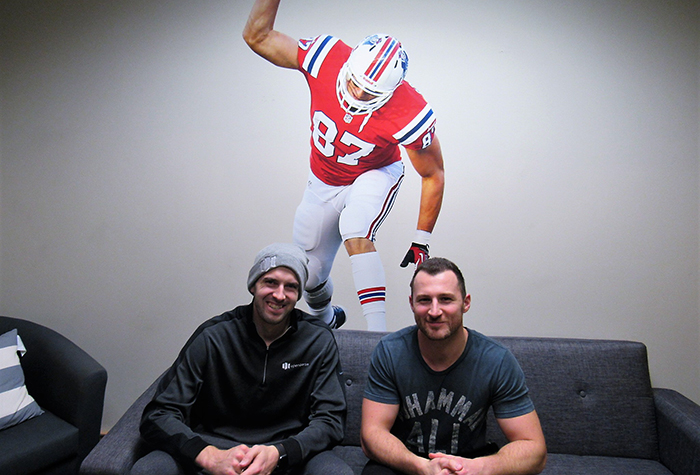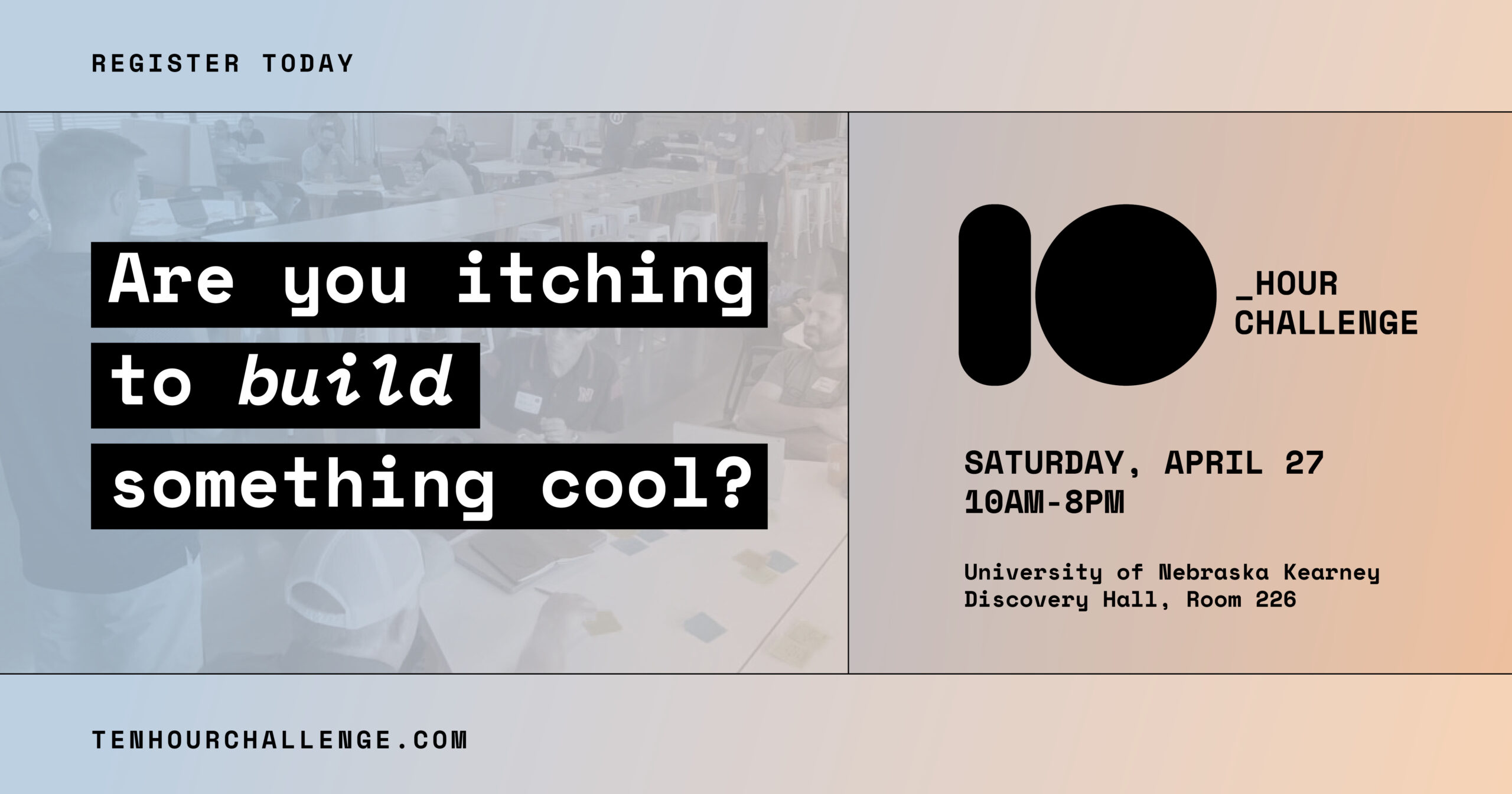
One of the conference rooms at Lincoln sports tech startup opendorse features a large cutout of New England Patriots tight end Rob Gronkowski on the wall. CEO and Co-Founder Blake Lawrence invited SPN into the “Gronk Room” for a deeper dive into a company that just completed a $3.5 million Series A capital raise.
“Gronk’s been a long-time user of opendorse,” Lawrence said. “He made tens of thousands of dollars in one month through the platform, so he sent us an autograph.”
With the click of a button, a pro athlete can approve social media content from sponsoring brands to be posted to their followers. And they get paid for it.
“We’ve got about 2,500 athletes on the platform, from Odell to McGregor, Wambach to Draymond, Altuve to Messi,” Lawrence said. “There’s 10,000 pro athletes out there, and we want all of them. That’s the number.”
Athletes are at the center of the opendorse business model and pay nothing to use it unless they choose to invest in the company, as former Husker and current Chicago Bears defensive back Prince Amukamara did recently.
“We believe that athletes at every level of sport, amateur to highest level of pro sports, provide incredible value to the teams they play for, the leagues they play in, and the organizations they represent,” Lawrence said. “We put athletes right in the center of our bullseye.”
And the market doesn’t just include the big names, something that’s important to Lawrence and Co-Founder Adi Kunalic, both former Husker football players.
“We want athletes like Austin Cassidy who played safety at Nebraska and is known in this community but not outside the state, to Gronk who is a globally-recognized brand, and everything in between,” Lawrence said. “Each one of those athletes deserves the opportunity to leverage the audience they’ve built. We know what it’s like to be AC, we know that guy.”
And the audience is huge. The opendorse portfolio of athletes has an estimated 850 million social media followers. But Lawrence prefers to avoid the term “influencer marketing” to describe the company.
“Athletes are influencers, but athlete marketing is very different than influencer marketing,” he said. “I like ‘thumb stoppers’ or ‘scroll stoppers’. If you’re a sports fan, it’s the faces that make your thumb stop, not the logos. There’s a different emotional appeal to a logo than a personality.”
The startup path began for Lawrence and Kunalic in 2010 when they formed Hurrdat to manage social media for companies around the world with a focus on the Midwest. Hurrdat has since been sold, but the foray into athlete marketing started in 2011.
“Prince got drafted in the first round and said ‘Dude, I gotta manage this social media, I want to engage my fans’,” Lawrence said. “We thought, we’re helping companies, why not help athletes?”
The initial challenge was that while athletes like Amukamara really liked the content Hurrdat created, they didn’t have time to post it themselves.
“Prince makes his money on the field, not on his phone,” Lawrence said. “At that moment we realized there’s a problem here.”
That realization led to development of the current platform that makes it easy for athletes to approve content and have it posted automatically with one click.
“At the core of opendorse is a software platform that allows anyone with content to ask anyone to share it on social,” Lawrence said. “Package it, hit send and the athlete gets a message. Yes or no, one click. That’s the core of the software.”
While it seems simple on the surface, there are complexities to be managed by the opendorse platform.
“It’s an industry where the workflow includes the brand, the agent, the manager, the assistant, the association, the attorney, the financial manager, and so on,” Lawrence said. “There are so many people involved with one post. We’re proud to make it sound easy. And we’re in Lincoln, Nebraska.”
The early days presented a challenge not unfamiliar to startups – finding a fit.
“We’re five years into this beast,” Lawrence said. “Whenever you start something you’re looking for product/market fit, that mythical land in the startup world. When Adi and I started, we did it because we believed that this solution should exist.”
Sometimes that means pulling the product and the market closer together.
“You kinda become hooked on the idea that the market needs this solution, and you have to believe and become absolutely obsessed with making it true,” Lawrence said. “Sometimes that means bringing the market closer to the future or vice versa. Where we are right now, in the land of product/market fit, that’s a powerful feeling.”
Success initially required educating brands on why the concept could work.
“In 2012, the term ‘influencer marketing’ was rather novel, and it was a harder pitch back then,” Lawrence said. “The most common question was ‘Why does this matter?’ Nowadays there are influencer marketing companies popping up every month.”
Today, the company has personnel in Chicago and New York to be closer to their customer base, but headquarters remain in Lincoln. Lawrence has seen the Silicon Prairie ecosystem mature and is pleased with it.
“It’s great to see the maturation and the support that comes along with it,” he said. “Knowing that the same individuals that were striving to just get noticed when we started are now building their second company, or exited, or are adding their 100th employee.”
Lawrence also points to the contributions of startup accelerators, businesses being started by students he presented to in college, and SPN.
“When we started in August of 2010, I had heard about this thing called Silicon Prairie News, and I made a goal to be in it,” he said. “In August 2011 we had our first story.”
But substantial challenges remain, including raising capital.
“I don’t wish it on anyone to raise capital from Nebraska, but I’m o.k. with that,” Lawrence said. “We have a ways to go as far as respect in the VC community. We gotta build 112-foot buildings and put a logo on it, that’s what we need to do to earn respect.
The presence of Hudl in Lincoln helps, and also motivates.
“I can tell you that in the sports tech world, being in the same city as Hudl really helps us,” Lawrence said. “Seeing Hudl is a motivator, and I hope seeing opendorse is a motivator to somebody else. You better believe that deep down we want to build a building right next to Hudl’s.”
Are there plans to move into other vertical markets? Probably not.
“Our software can be applied to other verticals, but I caution any founder or startup from chasing a market they don’t believe in,” Lawrence said. “At the end of the day, athletes need opendorse. Mommy bloggers don’t, celebrities don’t. In every other industry, the creators own the content they create. It’s a conundrum.”
“When we wake up in the morning, we turn on Sports Center, not CMT,” he added.
—
Rod Armstrong is Vice President of Strategic Partnerships for AIM in Lincoln, Nebraska. He is a regular contributor to Silicon Prairie News.




